
Degroof Petercam: Solid late-cycle expansion but slower growth on the horizon
Rising protectionism remains a key danger for the world economy. Global trade prospects have already weakened before Trump imposed tariffs on steel and aluminium. The impact of the latter remains modest but chances of escalation have risen significantly.
15.06.2018 | 12:15 Uhr
The global economic expansion has already entered its tenth year. Economic indicators remain solid for now, even though several leading indicators suggest that the pace of the recovery is slowing. The world economy remains robust for the time being. The negative output gaps witnessed over the past decade in most parts of the world have all but closed so that the momentum for catch-up growth is quickly fading. Tighter monetary conditions, a gradually diminishing effect of US fiscal stimulus measures, capping commodity prices, a more difficult international trade environment and less Chinese capital investment signal a growth slowdown in the quarters ahead. Indeed, we seem to be in the late-cycle phase of the expansion. The only thing that’s missing is a general pick-up in inflation. So far, firming economic activity has only modestly translated into rising wage and inflation readings. Headline inflation has been creeping higher but this is mainly the result of the year-on-year evolution in energy prices. Core inflation, meanwhile, remains quite modest. There has been a lot of talk about the death of the Phillips curve but it might be premature to confirm that message. All in all, inflationary pressures are slowly but gradually building. At the same time, other factors including globalization, technological change and digitization, the ageing of the population, insufficient labour union power, lower anchored inflation expectations and sluggish productivity growth suggest that inflation is unlikely to break out. Financial conditions look set to become tighter from here eventually biting into economic activity, perhaps already later this year. Also, as spare capacity erodes and central banks are focusing on gradually removing monetary accommodation, the risk of accidents in the real economy and/or financial markets is rising. Rising protectionism remains a key danger for the world economy. Global trade prospects have already weakened before Trump imposed tariffs on steel and aluminium. The impact of the latter remains modest but chances of escalation have risen significantly.
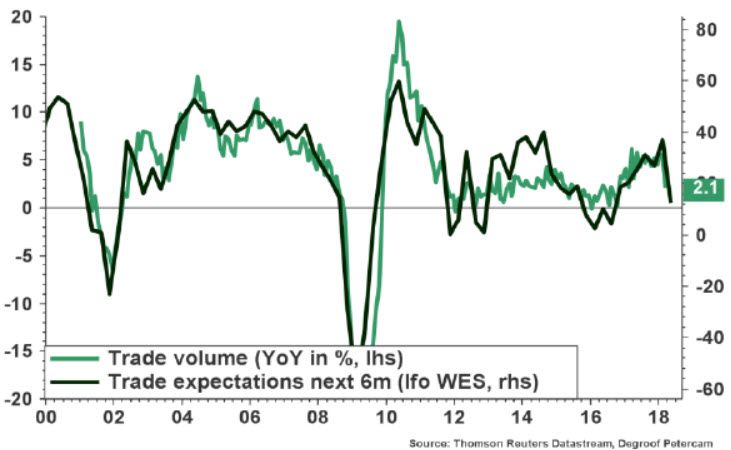
US: Fed hiking rates for the second time this year, the seventh since the end of 2015
The United States are currently seeing the second-longest economic expansion in history with second quarter growth estimated to come in at above 3%. Meanwhile, the yield curve continues its flattening trend. This is something to monitor closely as it tends to go hand in hand with slower economic growth further down the road although recession odds are still low for now. Consumer confidence is still strong and the outlook for investment has been improving according to several leading indicators. Importantly, the low household savings rate in combination with an expensive equity market and rising real estate prices bear watching. President Trump’s tax reforms are temporarily boosting economic growth but will primarily result in deteriorating public finances (towards a deficit of around 4 to 5% of GDP) and growing inequality over time. Inflation is rearing its head again, albeit still modestly, as the labour market is nearing full employment. Therefore, more tightening of monetary policy is in the cards. As things currently stand it can be expected that the Fed under new chair Powell is looking for two or three more rates hikes this year, including this month’s lift to 2%. In case significant volatility in financial markets resurfaces, it may convince the Fed to be more cautious. A further significant flattening of the yield curve over the coming months could well prompt the Fed to pause its monetary tightening efforts at some point in 2019 when the pace of economic growth is likely to slow down materially.
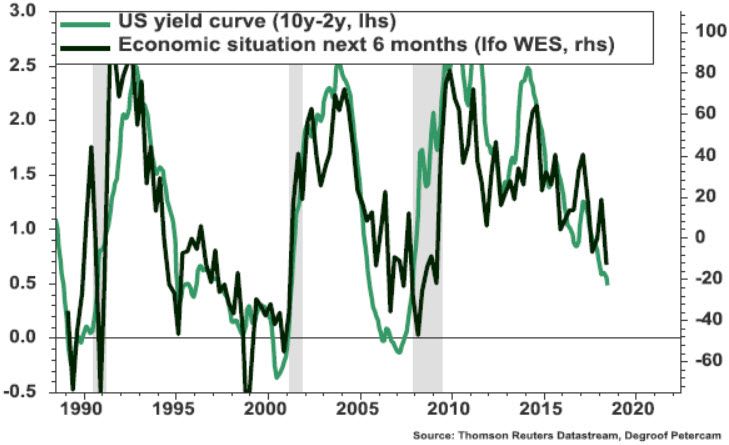
Italian politics and softer confidence indicators unlikely to deter ECB from ending QE-plan
While the latest leading indicators suggest that economic growth is set to moderate in the months ahead, the overall economic picture remains one of continuing expansion. Since the second half of 2016, the European economic cycle has seen solid improvement. All sectors are recovering, and the labour market is thriving again. However, unemployment remains above pre-crisis levels, and there are major divergences between countries. Moreover, there are many discouraged workers who have dropped out of the labour force in the past few years, as well as part-time workers who would rather work full time. Hence, it should not come as a surprise that wage pressures will remain modest for some time to come, and that inflation will stay below the 2% target. As a result, tighter monetary policy should not be expected any time soon. Of course, the ECB is looking to end its asset purchases by the end of this year as already indicated earlier. But it is too soon for an actual rate hike. As things stand, the first rate hike will probably not come before the summer of 2019. The risks surrounding Italy, as highlighted before the elections in March, remain present even though economic fundamentals have improved over the past couple of years. Although the new anti-establishment coalition appears to have scaled back both its wild fiscal stimulus plans and anti-euro rhetoric, chances that it will succeed in getting the Italian economy back on track are very slim. The most pressing issues include the stagnation of productivity growth and the uncomfortably low support for the euro. In absence of a real economic improvement over the coming years, there is a real risk that the meagre Italian support for Europe and its single currency deteriorates further, a backdrop which populist political parties will try to exploit even further. And then there is the unfinished currency union. Some progress can be expected at the summit later this month. Eurozone finance ministers could agree on a backstop for the EU’s bank rescue fund via the expansion of the role of the European Stability Mechanism (ESM).
That said, major breakthroughs with regards to strengthening the monetary union (fiscal, political and banking) are not in the cards for now.
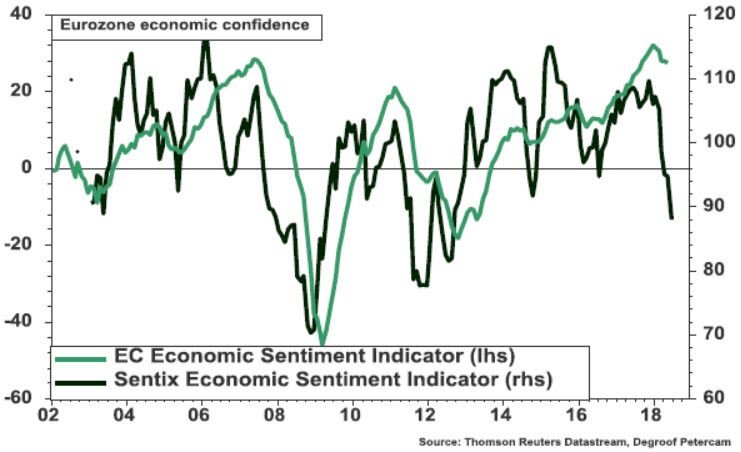
Japan: Boj remains put as lowflation persists and economic activity cools
Japan’s economy reported negative growth figures in the first months of the year. In the current quarter, growth should return to positive territory again. That said, confidence indicators signal a slowdown from the solid growth pace witnessed in 2017. Meanwhile, incoming inflation prints remain soft and the same goes for household expectations with regards the future path of inflation. True, the labour market is becoming increasingly tight as the unemployment rate stands at a 25-year low. Survey evidence also reveals a lack of skilled labour and a high ratio of job-openings to applicants. But so far core inflation has increased only a bit and the BoJ is searching for more evidence of rising price pressures before altering its policy of yield curve control and inflation overshooting.
Emerging markets: receding tide but risks mostly idiosyncratic
The situation in the emerging world is, as usual, very different from region to region and from country to country. Asia and Eastern Europe are performing more or less as expected while Latin America disappoints. The recent upheaval in EM financial markets has sparked comparisons to the debt crises of the 1980s and 1990s. True, tightening financial conditions usually herald a more difficult environment for emerging markets. That said, the analogy looks of the mark. Those events had their roots in large external financing needs but apart from Turkey and Argentina the risks facing most EMs today are significantly smaller (see also: What’s go i ng o n i n E M ?) . Indeed, the vulnerability of EM in general is lower compared to past decades. Many EM have improved their macroeconomic frameworks, including the use of flexible exchange rates, ample reserve buffers and multiple financial safety nets. That said, domestic risks in some important countries like Brazil (public debt trajectory) and China (private debt trajectory) remain present. The Chinese economy, as the second biggest in the world, remains an important point of attention. The latest figures confirm that Chinese leaders are serious about reducing credit growth. For the time being, there is insufficient evidence that this results in a marked slowdown in growth. But that could change sooner than many suspect. The rapid aging of the population, the rebalancing of the economy towards more domestic consumption away from unsustainable investment on top of increasing global trade tensions mean that risks for the Chinese economy are skewed to the downside.
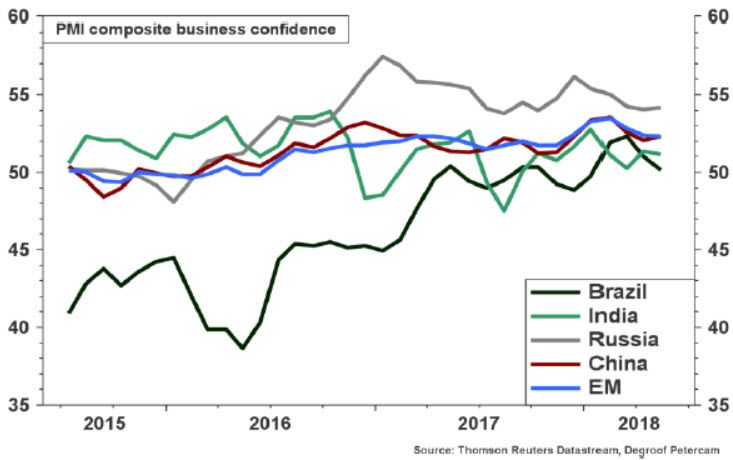
Forecasts for 2018-2019
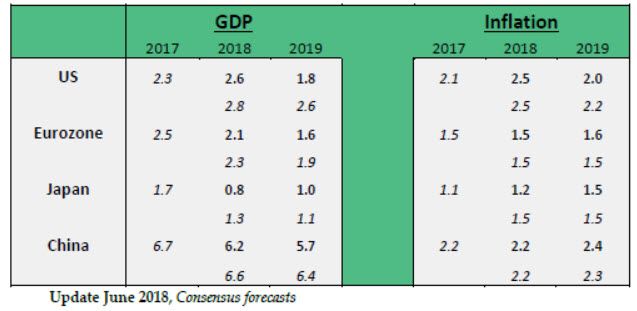



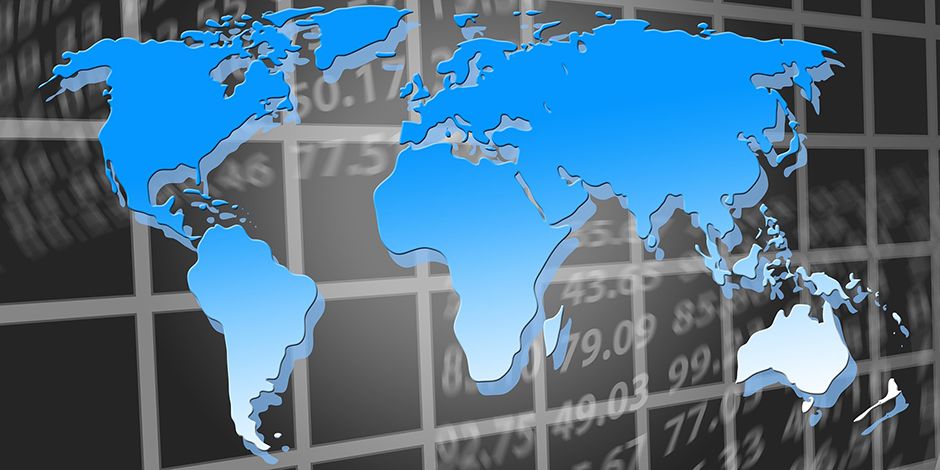
Diesen Beitrag teilen: